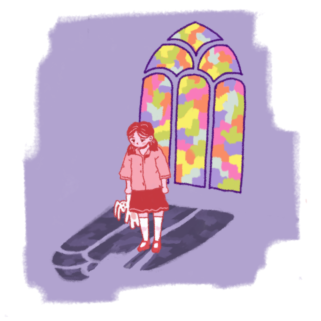On the train back from Bulldog Days, the whirlwind weekend tour of Yale for admitted students, one of my high school classmates pulled a thick blue book out of her bag to leaf through. Wide-eyed, I asked what it was.
“Yale’s course book,” she said. “I think this might make my decision for me.”
I was given to poring over Yale’s promotional materials, so I knew the school offered over two thousand classes, more than 75 majors, and was basically a nerd’s heaven on earth. Still, having failed to pick up a copy of the Yale College Programs of Study myself during Bulldog Days, I felt a bit cheated. I knew I was missing something.
When my first Blue Book arrived in the mail a few months later, I did what any over-eager pre-frosh (or, really, any Yale student) would do: I dog-eared, post-it-noted, highlighted, and circled before starting to make my lists. I still have that first Blue Book, and my second. My classmate chose Yale.
This September, newly appointed Registrar Gabriel Olszewski will decide with Dean Mary Miller when to discontinue the Blue Book, YCPS Managing Editor Laurie Ongley said. She said they will likely choose to eliminate the Blue Book next year or in 2013. Yale’s course catalog, first printed as a pamphlet in 1715, will be available only online.
Yale students have had to pre-order print Blue Books since summer 2010 instead of receiving them automatically, with the expectation that some would use the online course selection system exclusively. As soon as the coming semester’s classes go live on Yale Online Course Information, or OCI, students update online statuses with announcements: “OCI is live—don’t go through every department again this year.” Students await with equal eagerness the arrival of print Blue Books in the mail. The verb “to bluebook” is commonly used, as in: we start bluebooking immediately, and we do so obsessively. Words derived from the acronym OCI have been slower to enter the Yale lexicon.
Every course catalog since 1715 is documented in Yale’s archives. Together, they trace Yale’s development as an academic institution. Centuries ago, students could tack electives in math or languages onto a syllabus of Greek and Latin giants and “natural philosophy.” The Manuscripts and Archives collection in Sterling Memorial Library holds the course listings dating back to 1822. The pages are soft and the print, gray. The books have been printed in the font now used since the 1940s.
Yale was teaching literature, history, and modern scientific theories by its bicentennial in 1901. Bacteriology and Military Science became majors by 1939. Eight years later, the Naval Science department joined their ranks, offering courses like Piloting and Navigation and Amphibious Operations. In the sixties, the curriculum admitted atomic physics. A 1969 seminar was titled, “Is a Just War Possible?” Film Studies arrived by the eighties.
“This book represents the heart and soul of what the Yale faculty holds in promise,” wrote Miller in an introduction to this year’s version.
Approximately a third of returning upperclassmen pre-ordered print Blue Books this year (those who didn’t can buy one for $5 at 246 Church Street). “We’ve been talking for a long time about phasing it out,” Ongley said. “But enough people still use it that we want to be really careful… we want to continue to print it until we’re sure it won’t be missed terribly.”
Caroline Jaffe ’13 chose to pre-order. Like many of her classmates, she finds the print book is easier to peruse than OCI and has a certain sentimental value. “I’m a bit of a traditionalist,” she said, “and I really love having a tangible volume that I can hold and use and have as an artifact, because I can’t keep and hold OCI as a memory of my college years.”
Though environmental and budget concerns have motivated the transition, its largest driving factor is informational. “Online information is more current,” Ongley explained. “As soon as the Blue Book goes to press, it’s obsolete. We expect that students have a greater expectation for online, current information.” She said that Yale has waited to improve the online system before eliminating its print counterpart entirely.
“Before we remove it, we want to put some really good tools out there.”
Meanwhile, the combination of a print Blue Book and OCI leaves students in an uncomfortable limbo. OCI isn’t always easy to browse, and because course information is subject to change, class meeting times and locations were omitted from the print Blue Book this year.
Jared Shenson ’12 and Charlie Croom ’12 have stepped into the breach by creating a new Web site, yalebluebook.com, which was, Shenson said, “born out of a desire to really make a usable version of OCI.” The site has many features unavailable on OCI and is updated constantly according to student feedback—but its development is symptomatic of the chaos surrounding this transition. Because it is not linked into Yale’s databases, it also may add to the chaos.
If Shenson and Croom are successful in their vision, that will change.
“We met briefly last week with a lot of people in [Information and Technology Services] in addition to Gabe Olszewski, the new registrar, about how we can work together with them,” Croom said, “and what the future of ‘bluebook’ might look like after we graduate.”
This month’s meeting between Olszewski and Miller will determine the Blue Book’s future form—for a time. What the course catalog will look like many years from now is anyone’s guess.


